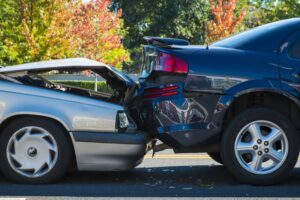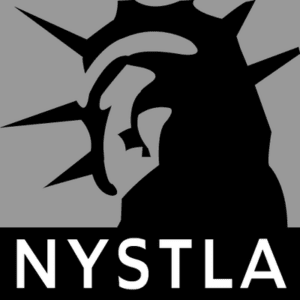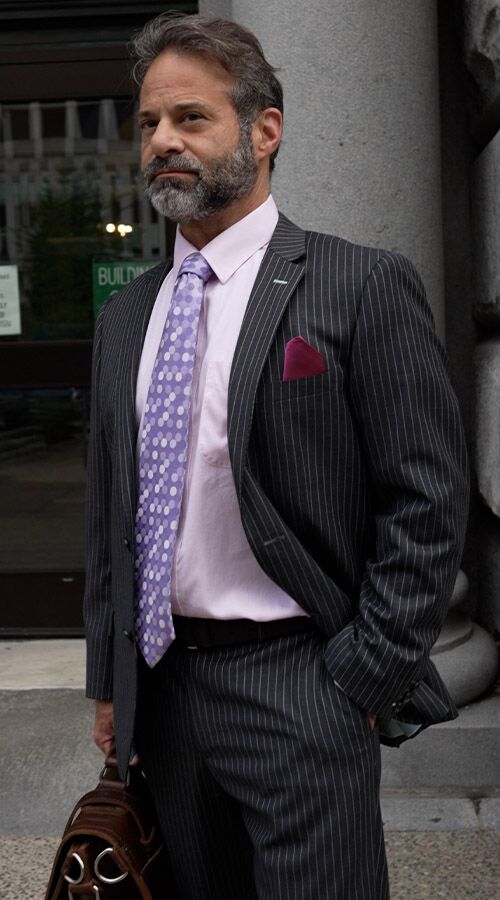In recent years, ridesharing services like Uber and Lyft have become increasingly popular in Buffalo, NY, providing convenient and affordable transportation options for residents and visitors alike. While these services have undoubtedly transformed the way we get around the city, they have also brought about new challenges, particularly when it comes to road safety. Rideshare accidents have become more common, and it’s essential to understand the common causes behind them to stay safe on Buffalo’s roads.
Distracted Driving
One of the leading causes of rideshare accidents in Buffalo, as in many other places, is distracted driving. Both passengers and drivers often use their smartphones to check messages, use GPS navigation, or even stream entertainment during the ride. These distractions can divert the driver’s attention away from the road, leading to accidents. Passengers should avoid distracting their drivers and prioritize their safety.
Fatigue
Rideshare drivers often work long hours to maximize their earnings, which can lead to fatigue. Fatigue impairs a driver’s reaction time and decision-making abilities, making them more susceptible to accidents. It’s crucial for rideshare drivers to take breaks and get enough rest to stay alert on the road.
Speeding
Speeding is a common cause of accidents in any city, and Buffalo is no exception. Rideshare drivers may feel pressure to complete as many trips as possible in a short amount of time, leading them to exceed the speed limit. Speeding reduces a driver’s ability to react to sudden changes in traffic conditions, making accidents more likely.
Inadequate Training
While rideshare companies like Uber and Lyft provide some training for their drivers, it may not be sufficient to prepare them for all the challenges they can encounter on the road. Drivers may lack the skills to handle adverse weather conditions, heavy traffic, or aggressive drivers. Inadequate training can contribute to accidents, putting both drivers and passengers at risk.
Poor Vehicle Maintenance
Rideshare drivers are responsible for the maintenance of their vehicles. Unfortunately, some drivers may neglect regular maintenance, such as brake checks, tire rotations, and oil changes, to save money or time. A poorly maintained vehicle is more likely to experience mechanical failures that can lead to accidents.
Weather Conditions
Buffalo, NY, is known for its harsh winters and unpredictable weather. Snow, ice, and rain can create treacherous driving conditions, even for experienced drivers. Rideshare drivers may not always have the skills or equipment to handle adverse weather, increasing the risk of accidents during inclement weather.
Intoxicated or Impaired Driving
Despite strict policies, some rideshare drivers may still operate under the influence of alcohol or drugs. Impaired drivers pose a significant risk to both themselves and their passengers. Passengers should always be vigilant and report any signs of impairment in their drivers.
Navigating the Aftermath: Immediate Steps to Take After a Rideshare Accident in New York
The rise of rideshare services like Uber and Lyft has revolutionized transportation in New York, offering a convenient and often more affordable alternative to traditional taxis. However, with the increase in rideshare usage comes a heightened risk of accidents. If you find yourself involved in a rideshare accident, the aftermath can be disorienting and stressful. Knowing the proper steps to take immediately following the incident can significantly impact your safety, legal standing, and potential for compensation.
Ensuring Immediate Safety and Medical Attention
The first and foremost priority after any accident is to ensure the safety and well-being of all parties involved. Whether you are a passenger, driver, or pedestrian, your initial focus should be on assessing the situation. Check yourself for injuries and then, if possible, check on others. Even if injuries appear minor, it is crucial to call emergency services. Adrenaline can mask symptoms of severe injuries that may not become apparent until later. Professional medical personnel should evaluate everyone involved to ensure no hidden injuries are overlooked.
In addition to addressing immediate health concerns, contacting emergency services ensures that the accident is officially documented. Police officers will arrive at the scene, assess the situation, and create an accident report, which is a vital piece of evidence for any subsequent legal or insurance claims. Cooperate with the officers, providing a clear and factual account of the incident without speculating or assigning blame. The official report will be instrumental in establishing the facts of the case.
Gathering Critical Information
Once the immediate safety concerns are managed, begin gathering information from all parties involved in the accident. This includes the rideshare driver, any other drivers, passengers, and witnesses. Collect names, phone numbers, and addresses, as well as insurance details. For the rideshare driver, it is essential to obtain their personal insurance information and the insurance information provided by the rideshare company. Rideshare companies typically offer insurance coverage for drivers, but the specifics can vary depending on the circumstances of the accident.
Additionally, take note of the vehicle details, including make, model, color, and license plate number. If there are witnesses to the accident, try to get their contact information as well. Their accounts can be crucial in corroborating your version of events.
Document the scene with photographs if you are physically able to do so. Capture images of the vehicles involved, any visible damage, road conditions, traffic signals, and any other relevant details. These photographs can serve as invaluable evidence in building your case and supporting your claims with the insurance companies or in court.
Notifying the Rideshare Company
It is imperative to notify the rideshare company about the accident as soon as possible. Most rideshare companies have specific protocols and insurance policies that are activated once they are informed of an incident. Use the app or contact their customer service to report the accident, providing all necessary details. This step is crucial for initiating the insurance process and ensuring that the company acknowledges the incident. Follow any instructions they provide and keep records of all communications.
Seeking Medical Evaluation and Documentation
Even if you do not feel injured immediately after the accident, seek a comprehensive medical evaluation as soon as possible. Some injuries may not manifest symptoms right away but can lead to significant health issues if left untreated. A thorough medical examination will identify any latent injuries and establish a medical record that links them to the accident. This documentation will be vital for any insurance claims or legal actions you may pursue.
Follow all medical advice and attend any recommended follow-up appointments. Keep detailed records of your medical visits, treatments, and expenses. These records will help substantiate your claims for compensation and ensure that you are fully reimbursed for your medical costs.
Handling Insurance Claims
After a rideshare accident, navigating the insurance process can be complex. Both the rideshare company’s insurance and the at-fault driver’s insurance may be involved, and each will try to minimize their financial liability. Contact your insurance company to report the accident and provide them with all the gathered information. Be honest and thorough in your account of the incident, but avoid admitting fault or speculating on the cause of the accident.
It is also wise to consult with an attorney who focuses in rideshare accidents. Insurance companies may pressure you into accepting a quick settlement that is far less than what you deserve. An attorney can help you understand the full extent of your rights and negotiate on your behalf to secure a fair settlement.
Legal Considerations and Representation
Rideshare accidents often involve multiple parties and insurance policies, making legal representation invaluable. An attorney experienced in handling rideshare accident cases will be familiar with the intricacies of rideshare insurance policies and the relevant state laws. They can guide you through the legal process, ensuring that all necessary documentation is filed correctly and deadlines are met.
Your attorney will investigate the accident, gather additional evidence, and build a strong case to support your claims. They will handle communications with the insurance companies and any legal proceedings, allowing you to focus on your recovery. In cases where a fair settlement cannot be reached, your attorney can represent you in court to pursue the compensation you deserve.
Understanding Potential Compensation
Victims of rideshare accidents may be entitled to various forms of compensation. This can include coverage for medical expenses, lost wages, pain and suffering, and property damage. In some cases, punitive damages may be awarded if the at-fault party’s behavior was particularly negligent or reckless.
Your attorney will help you understand the full scope of compensation you may be entitled to and work diligently to ensure that you receive it. They will negotiate with the insurance companies to secure a fair settlement that covers all your losses and expenses. If necessary, they will take your case to court to fight for your rights.
Related Videos
How should I choose a personal injury attorney for my claim?
Insurance companies dirty tricks
Preventative Measures and Future Considerations
While it is impossible to prevent all accidents, taking certain precautions can reduce your risk when using rideshare services. Always wear your seatbelt and ensure that the driver is adhering to traffic laws and safe driving practices. Report any unsafe behavior to the rideshare company, and consider choosing well-reviewed drivers with good safety records.
In the event of an accident, being prepared and informed can make a significant difference in the outcome. Understanding your rights and the steps to take immediately following the incident will help protect your health, legal standing, and financial interests.
How Comparative Negligence Works in Rideshare Accidents
Rideshare accidents often involve multiple parties – the rideshare driver, passengers, and other drivers on the road. Determining fault in these situations can be intricate. Comparative negligence allows for a nuanced evaluation of each party’s contribution to the accident. If a passenger in a rideshare vehicle is injured, for instance, the court will assess the actions of all parties involved, including the rideshare driver, other drivers, and the injured passenger.
Let’s consider a scenario where a rideshare driver fails to signal while changing lanes, and another driver runs a red light, colliding with the rideshare vehicle. If a passenger in the rideshare vehicle sustains injuries, the court may find both drivers partially at fault. The level of compensation the injured party receives will be adjusted based on their degree of fault, as determined by the court.
Understanding Rideshare Services and Their Impact on Pedestrian Safety
Rideshare companies like Uber and Lyft operate on a model that connects passengers with drivers through a digital platform. Unlike traditional taxi services, rideshare drivers use their personal vehicles and are considered independent contractors rather than employees of the company. This distinction has significant implications for liability and insurance coverage in the event of an accident. As rideshare services have grown in popularity, so too have concerns about their impact on pedestrian safety. The frequent stops, sudden turns, and constant navigation of urban streets by rideshare drivers can increase the likelihood of accidents. Moreover, the demand for quick pickups and drop-offs in congested areas often leads to unsafe driving practices, such as double parking or stopping in crosswalks. When a pedestrian is struck by a rideshare vehicle, determining who is responsible for the accident can be complex. This complexity is compounded by the fact that rideshare drivers are often in various stages of their work cycle—waiting for a ride request, en route to pick up a passenger, or transporting a passenger—each of which carries different insurance implications.
Determining Liability in Rideshare Pedestrian Accidents
Liability in a rideshare accident involving a pedestrian is not always straightforward. In a traditional car accident, the driver who is at fault is typically held responsible for the damages. However, in the context of a rideshare accident, multiple parties may be involved, including the rideshare driver, the rideshare company, and possibly even the pedestrian. Determining who is liable depends on the specific circumstances of the accident. One of the key factors in determining liability is the status of the rideshare driver at the time of the accident. If the driver was logged into the rideshare app and waiting for a ride request, the rideshare company’s insurance policy typically provides coverage for any accidents that occur. If the driver was en route to pick up a passenger or was actively transporting a passenger, the rideshare company’s insurance policy usually provides higher levels of coverage. However, if the driver was not logged into the app at the time of the accident, the driver’s personal auto insurance policy is typically the primary source of coverage. In cases where the pedestrian’s actions may have contributed to the accident, the issue of comparative negligence may arise. Under New York’s comparative negligence law, the pedestrian’s compensation may be reduced by their percentage of fault in the accident. For example, if a pedestrian was crossing the street against a traffic signal and was struck by a rideshare vehicle, their ability to recover damages may be diminished based on their degree of fault.
Insurance Coverage in Rideshare Pedestrian Accidents
Insurance coverage is a critical consideration in rideshare pedestrian accidents. Rideshare companies like Uber and Lyft are required by New York law to provide specific insurance coverage for their drivers. This coverage varies depending on the driver’s status at the time of the accident. When the driver is logged into the app but has not yet accepted a ride request, the rideshare company’s insurance policy typically includes liability coverage for bodily injury and property damage. This coverage is intended to protect third parties, such as pedestrians, who may be injured in an accident caused by the rideshare driver. However, the coverage limits are generally lower during this period compared to when the driver is actively transporting a passenger. Once the driver has accepted a ride request and is either en route to pick up the passenger or transporting the passenger, the rideshare company’s insurance policy provides significantly higher coverage limits. This coverage includes liability for bodily injury, property damage, and uninsured/underinsured motorist coverage. These higher limits are intended to provide greater protection to both passengers and third parties, such as pedestrians, who may be involved in an accident. If the rideshare driver was not logged into the app at the time of the accident, the driver’s personal auto insurance policy is typically the primary source of coverage. In such cases, the pedestrian may need to pursue a claim against the driver’s personal insurance, which may have lower coverage limits and could potentially lead to disputes over liability and compensation.
Legal Rights of Pedestrians Injured in Rideshare Accidents
Pedestrians who are injured in rideshare accidents have legal rights to pursue compensation for their injuries. In New York, pedestrians who are struck by a vehicle have the right to seek compensation for medical expenses, lost wages, pain and suffering, and other damages resulting from the accident. When the vehicle involved is a rideshare vehicle, the process of seeking compensation can become more complex due to the involvement of multiple insurance policies and potential disputes over liability. Injured pedestrians may pursue a personal injury claim against the rideshare driver, the rideshare company, or both, depending on the circumstances of the accident. If the rideshare driver was at fault and was logged into the app at the time of the accident, the pedestrian may be able to seek compensation through the rideshare company’s insurance policy. However, if the driver was not logged into the app, the pedestrian may need to file a claim against the driver’s personal insurance policy. In cases where the rideshare company’s insurance coverage is insufficient to fully compensate the pedestrian for their injuries, the pedestrian may also have the option to pursue additional compensation through their own uninsured/underinsured motorist coverage. This type of coverage, which is part of many auto insurance policies in New York, can provide additional compensation if the at-fault driver’s insurance limits are inadequate.
At The Nicotra Law Firm, PC, we understand that being involved in a rideshare accident can be a stressful and overwhelming experience. In Buffalo, NY, as in many other cities, accidents involving rideshare services like Uber and Lyft can lead to complicated legal proceedings and significant medical expenses. If you’ve been injured in a rideshare accident, our experienced team is here to help you navigate the legal complexities and ensure you receive the compensation you deserve.
Experience in Rideshare Accident Cases
Our team at The Nicotra Law Firm, PC, focuses on personal injury cases, including those related to rideshare accidents. We have a deep understanding of the unique challenges and nuances that come with such cases, including dealing with rideshare companies and their insurance providers.
Thorough Investigation
We understand the importance of a thorough investigation to establish liability and determine the true extent of your damages. Our team of skilled investigators will work tirelessly to gather evidence, interview witnesses, and reconstruct the accident scene to build a strong case on your behalf.
Negotiating with Insurance Companies
Dealing with insurance companies can be a daunting task, especially when you’re recovering from an accident. The Nicotra Law Firm, PC, has extensive experience negotiating with insurance companies to ensure that you receive a fair settlement that covers your medical expenses, lost wages, and pain and suffering.
Legal Advocacy and Representation
Our dedicated team of attorneys is prepared to advocate for your rights and represent your interests in court, if necessary. We have a proven track record of success in litigating personal injury cases, and we will fight tirelessly to secure the compensation you deserve.
Personalized Support
We understand that every rideshare accident case is unique, and we provide personalized support to each client. We’ll take the time to listen to your concerns, answer your questions, and keep you informed throughout the legal process.
No Fees Unless We Win
At The Nicotra Law Firm, PC, we operate on a contingency fee basis, which means you won’t have to worry about upfront legal fees. We only get paid if we secure a settlement or win your case in court, making our services accessible to everyone who needs them.
If you’ve been involved in a rideshare accident in Buffalo, NY, don’t navigate the legal complexities on your own. The Nicotra Law Firm, PC, is here to provide you with the experienced legal representation and support you need during this challenging time. Our commitment to securing justice and fair compensation for our clients has earned us a reputation as one of Buffalo’s leading personal injury law firms. Contact us today for a free consultation, and let us help you get back on the road to recovery. Your well-being is our priority.








